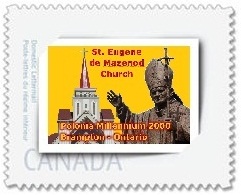
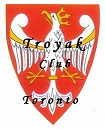
Troyak Club & The World Celebrating
Pope Saint John Paul II
100th Birthday !
https://en.wikipedia.org/wiki/Pope_John_Paul_II
Pope John Paul II (Latin: Ioannes Paulus II; Italian: Giovanni Paolo II; Polish: Jan Paweł II; born Karol Józef Wojtyła, 18 May 1920 – 2 April 2005) was head of the Catholic Church and sovereign of the Vatican City State from 1978 to 2005.
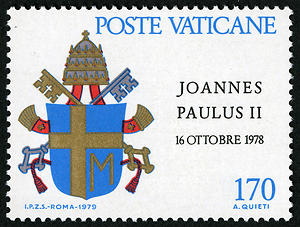
He was elected pope by the second papal conclave of 1978, which was called after Pope John Paul I, who had been elected in August to succeed Pope Paul VI, died after 33 days. Cardinal Wojtyła was elected on the third day of the conclave and adopted the name of his predecessor in tribute to him. John Paul II is recognised as helping to end Communist rule in his native Poland and eventually all of Europe. John Paul II significantly improved the Catholic Church’s relations with Judaism, Islam, and the Eastern Orthodox Church. He upheld the Church’s teachings on such matters as the right to life, artificial contraception, the ordination of women, and a celibate clergy, and although he supported the reforms of the Second Vatican Council, he was seen as generally conservative in their interpretation.
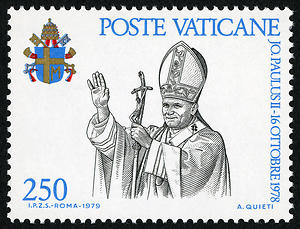
He was one of the most travelled world leaders in history, visiting 129 countries during his pontificate. As part of his special emphasis on the universal call to holiness, he beatified 1,340 and canonized 483 people, more than the combined tally of his predecessors during the preceding five centuries. By the time of his death, he had named most of the College of Cardinals, consecrated or co-consecrated a large number of the world’s bishops, and ordained many priests.
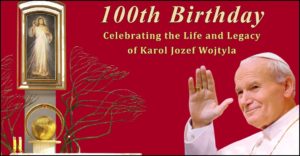
John Paul II was the second longest-serving pope in modern history after Pope Pius IX. Born in Poland, John Paul II was the first non-Italian pope since the 16th-century Pope Adrian VI. John Paul II’s cause for canonisation commenced one month after his death with the traditional five-year waiting period waived. On 19 December 2009, John Paul II was proclaimed venerable by his successor, Benedict XVI, and was beatified on 1 May 2011 (Divine Mercy Sunday) after the Congregation for the Causes of Saints attributed one miracle to his intercession, the healing of a French nun from Parkinson’s disease. A second miracle was approved on 2 July 2013, and confirmed by Pope Francis two days later. John Paul II was canonised on 27 April 2014 (again Divine Mercy Sunday), together with Pope John XXIII. On 11 September 2014, Pope Francis added these two optional memorials to the worldwide General Roman Calendar of saints. It is traditional to celebrate saints’ feast days on the anniversary of their deaths, but that of John Paul II (22 October) is celebrated on the anniversary of his papal inauguration. Posthumously, he has been referred to by some Catholics as “St. John Paul the Great”, although the title has no official recognition.
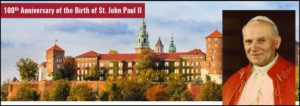

TROYAK EXECUTIVE TEAM is informing all members, colleagues, collectors and Polonia at large, that Club meetings taking place at John Paul II Polish Cultural Centre, 4300 Cawthra Rd. (just south of Hwy. 403), Mississauga, Ontario. The new members are always welcome. www.polishculturalcentre.ca
ADRES SPOTKAÑ KLUBOWYCH ! Zarząd Główny Klubu “Troyak” informuje wszystkich członków kolekcjonerów, sympatyków oraz całą Polonię, że spotkania klubowe odbywają się w Polskim Centrum Kultury im. Jana Pawła II, przy 4300 Cawthra Rd. (na południe od autostrady 403), Mississauga, Ontario. Zapraszamy nowych członków do prężnego. Klubu “Troyak”. www.polishculturalcentre.ca

“TROYAK” CLUB NEXT MEETINGS …
NASTĘPNE SPOTKANIA KLUBU “TROYAK” …
31st May 2020 @ 4:30 p.m. CANCELLED !
28th June 2020
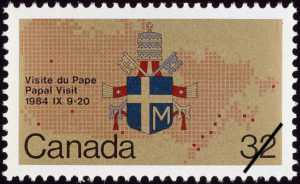
July & August 2020 – Summer break … Letnie wakacje …
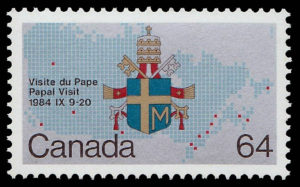
27th September 2020 @ 4:30 p.m.
4th October 2020 @ 9:00 a.m. to 4:00 p.m. …
Mississauga’s 5th Annual Fall Show
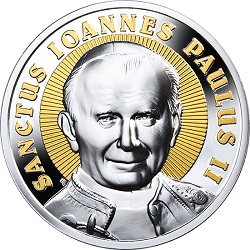
25th October 2020
29th November 2020

160 lat polskiego znaczka pocztowego
160 years of the Polish postage stamp
www.poczta-polska.pl
W dniu 31 stycznia 2020 roku został wprowadzony do obiegu znaczek pocztowy o wartości 3,30zł emisji “160 lat polskiego znaczka pocztowego”. W centralnej części znaczka, stylizowanego na pierwszy znaczek pocztowy, widnieje dwugłowy orzeł Królestwa Polskiego otoczony ornamentem z koroną; wzdłuż dolnej krawędzi znaczka umieszczono napis POLSKA, oraz oznaczenie wartości, a wokół orła napis: 160 lat polskiego znaczka pocztowego. Znaczki wydrukowano techniką offsetową, na papierze fluorescencyjnym, w formacie 31,25 mm x 39,5 mm, w nakładzie 120 000 sztuk. Arkusz sprzedażny zawiera 8 sztuk znaczków i jedno pustopole. Z tej okazji została wydana koperta FDC. Autor projektu: Bożydar Grozdew.
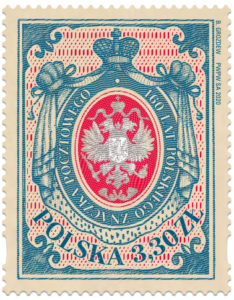
160 years of the Polish postage stamp …
denomination: 3,30 PLN; number of stamps in set: 1;
print run: 120.000 pcs; printing technique: offset;
stamp size: 31,25 mm x 39,5 mm; number of FDC: 1;
author: Bożydar Grozdew;
circulation date: 31st January 2020.

100. Rocznica zaślubin Polski z morzem
100th Anniversary of Poland’s Wedding to the Baltic Sea
www.poczta-polska.pl
W dniu 10 lutego 2020 roku zostanie wprowadzony do obiegu znaczek pocztowy o wartości 3,30zł emisji “100. rocznica zaślubin Polski z morzem”. Na znaczku przedstawiono fragment obrazu Wojciecha Kossaka, z 1930 roku – ,,Zaślubiny Polski z morzem” ze zbiorów Muzeum Wojska Polskiego w Warszawie; w prawym górnym rogu znaczka umieszczono napis POLSKA i oznaczenie wartości 3,30 zł a wzdłuż dolnej krawędzi – temat emisji: 100. ROCZNICA ZAŚLUBIN POLSKI Z MORZEM. Znaczki wydrukowano techniką offsetową, na papierze fluorescencyjnym, w formacie 39,5 x 31,25 mm, w nakładzie 168 000 sztuk. Arkusz sprzedażny zawiera 12 sztuk znaczków. Z tej okazji została wydana koperta FDC. Autor projektu: Jarosław Ochendzan.
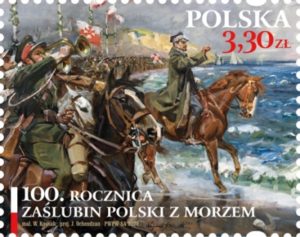
100th Anniversary of Poland’s Wedding to the Baltic Sea …
denomination: 3,30 PLN; number of stamps in set: 1;
print run: 168.000 pcs; printing technique: offset;
stamp size: 39,5 x 31,25 mm; number of FDC: 1;
author: Jarosław Ochendzan;
circulation date: 10th February 2020.
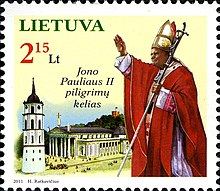
40. Rocznica pierwszego zimowego wejścia na Mount Everest
40th Anniversary of the first winter ascent of Mount Everest
www.poczta-polska.pl
Dnia 17 lutego 2020 r. została wprowadzona do obiegu kartka pocztowa z nadrukowanym znakiem opłaty pocztowej, emisji: 40. rocznica pierwszego zimowego wejścia na Mount Everest. Wartość nominalna znaku opłaty pocztowej z oznaczeniem literowym A odpowiada wartości nominalnej znaczka pocztowego używanego do uiszczenia opłaty za ekonomiczną przesyłkę listową nierejestrowaną, w tym kartkę pocztową, w obrocie krajowym, w formacie S o masie do 500 g. W prawym górnym rogu strony adresowej kartki nadrukowano znak opłaty pocztowej, na którym przedstawiono fotografię szczytu – Mount Everest w Himalajach. Wzdłuż dolnej krawędzi znaczka umieszczono napis: POLSKA oraz oznaczenie wartości: A. W części ilustracyjnej kartki znajduje się nazwa emisji ,,40. rocznica pierwszego zimowego wejścia na Mount Everest” oraz kolorowa fotografia autorstwa Bogdana Jankowskiego, przedstawiająca uczestników zimowej wyprawy na Mount Everest w 1980 roku. Fotografie pochodzą ze zbiorów Fundacji Andrzeja Zawady. Kartki o wymiarach 148 x 105 mm wydrukowano jednostronnie, techniką offsetową, na kartonie białym, w nakładzie 8000 sztuk. Autor projektu kartki: Jarosław Ochendzan.

40th Anniversary of the first winter ascent of Mount Everest …
denomination: 3,30 PLN; number of stationeries in set: 1;
print run: 8.000 pcs; printing technique: offset;
card size: 148 x 105 mm; author: Jarosław Ochendzan;
release date: 17th February 2020.
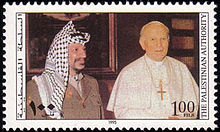
100. Rocznica odnowienia relacji dyplomatycznych
Polski i Azerbejdżanu
100th Anniversary of the restoration of diplomatic relations
between Poland and Azerbaijan
www.poczta-polska.pl
W dniu 20 lutego 2020 roku został wprowadzony do obiegu znaczek pocztowy o wartości 3,30zł emisji “100. rocznica odnowienia relacji dyplomatycznych Polski i Azerbejdżanu”. Na znaczku przedstawieni zostali ministrowie spraw zagranicznych Republiki Azerbejdżanu i Rzeczypospolitej Polskiej w 1920 roku: Fatali Khan Khojski i Stanisław Patek. Znaczki wydrukowano techniką offsetową, na papierze fluorescencyjnym, w formacie 43 x 31,25 mm, w nakładzie 180 000 sztuk. Arkusz sprzedażny zawiera 12 sztuk znaczków. Z tej okazji została wydana koperta FDC. Autor projektu: Maciej Jędrysik.
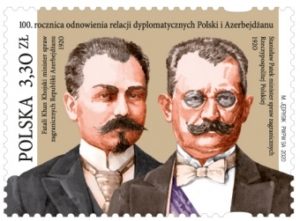
100th Anniversary of the restoration of diplomatic relations
between Poland and Azerbaijan … denomination: 3,30 PLN;
number of stamps in set: 1; print run: 180.000 pcs;
printing technique: offset; stamp size: 43 x 31,25 mm;
number of FDC: 1; author: Maciej Jędrysik;
circulation date: 20th February 2020.
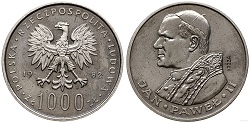
100-lecie zaślubin Polski z Bałtykiem
www.nbp.pl
Emisja wartości kolekcjonerskich stanowi okazję do upamiętniania ważnych historycznych rocznic i postaci oraz do rozwijania zainteresowań polską kulturą, nauką i tradycją. Narodowy Bank Polski jest centralnym bankiem państwa odpowiadającym za politykę pieniężną i stabilność cen. Jego funkcje określa Konstytucja Rzeczypospolitej Polskiej i ustawa o NBP. NBP ma wyłączne prawo emisji pieniądza. Jako bank centralny nie prowadzi rachunków bankowych obywateli, nie przyjmuje od nich lokat, nie udziela kredytów. Prowadzi natomiast obsługę budżetu państwa, a także podmiotów sektora finansów publicznych. Gromadzi rezerwy walutowe państwa i zarządza nimi. Pełni funkcję banku banków, tworząc warunki do działania systemu bankowego. Jest również jednym z najważniejszych ośrodków naukowo-analitycznych w dziedzinie ekonomii i rynków finansowych. 6 lutego 2020 roku Narodowy Bank Polski wprowadził do obiegu srebrną monetę o nominale 50 zł „100-lecie zaślubin Polski z Bałtykiem”.
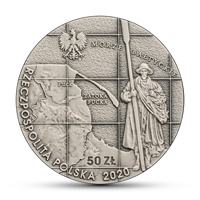
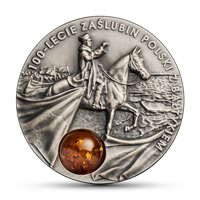
Nominał 50 zł … metal: Ag 999/1000; stempel: zwykły, oksyda, bursztyn; średnica: 45,00 mm; masa: 62,20 g; brzeg (bok): gładki; nakład: do 5000 szt.; Projektant: Dominika Karpińska-Kopiec; Emitent: NBP; Na zlecenie NBP monetę wyprodukowała Mennica Polska S.A. Wizerunek rybaka wg fotografii B. Gołogowskiego „Generał Haller nad morzem polskim wraz z rybakiem kaszubskim” ze zbiorów Centralnej Biblioteki Wojskowej im. Marszałka Józefa Piłsudskiego Wizerunek gen. Józefa Hallera wg obrazu Wojciecha Kossaka „Zaślubiny Polski z morzem” ze zbiorów Muzeum Wojska Polskiego.
Rzeczpospolita nad Bałtykiem Rozpad państw zaborczych po I wojnie światowej, działania Polaków na emigracji i walki polskich formacji wojskowych na wszystkich frontach stanowiły podstawę polskiej niepodległości. Na jej formę mieli wpływ zachodni politycy. „Swobodny i bezpieczny dostęp do morza”, jak czytamy w 13 punkcie orędzia prezydenta Stanów Zjednoczonych Thomasa Woodrowa Wilsona z 8 stycznia 1918 roku, był w postanowieniach Traktatu Wersalskiego przesądzony. Kiedy po 11 listopada 1918 roku długo jeszcze trwały walki o granice odradzającego się państwa, w dawnych Prusach Królewskich i na Pomorzu Gdańskim myślano o wyrwaniu z niemieckich kleszczy korytarza do Bałtyku. Wielka w tym zasługa admirała Kazimierza Porębskiego, inicjatora budzenia „świadomości morskiej” w społeczeństwie polskim. W imieniu Rzeczypospolitej przyznaną Polsce część Pomorza przejmował od Niemców generał Józef Haller, dowódca Frontu Pomorskiego. Zaślubiny z morzem – otwarcie na świat We wtorek 10 lutego 1920 roku około godziny 10.00 z Gdańska do Pucka wyruszył specjalny polski pociąg. Podróż trwała cztery i pół godziny! „Tak śliczną mieliśmy przed pociągiem lokomotywę, że – jak relacjonował korespondent „Gazety Gdańskiej” – już do Wrzeszcza uwlec się jakoś nie mogła […]”. Ten efekt niemieckiego sabotażu nie wpłynął na przebieg akcji. Delegacje przybyły do Pucka z całej Polski. „Masy ludu i wojska” w strugach deszczu, „wśród bicia z dział” dotarły na „plac lotniczy”, na którym zaimprowizowano kaplicę. Na maszt wciągnięto polską flagę i odprawiono Mszę Świętą. „Witamy cię, morze nasze polskie, i bierzemy cię w posiadanie” – tak zakończył kazanie ksiądz Józef Wrycza. Nad brzegiem morza wbito pamiątkowy pal, na którym osadzono polską flagę.
Józef Haller i pierścień Generał Józef Haller konno wjechał do morza. W imieniu Rzeczypospolitej wrzucił do wody platynowy pierścień od polskich gdańszczan i zakończył uroczystość słowami: „Oto dzisiaj dzień czci i chwały. Rozpostarł skrzydła Orzeł Biały, nie tylko nad ziemiami polskimi, ale i nad morzem polskim. Naród czuje, że go już nie dusi hydra, która dotychczas okręcała mu szyję i piersi. Teraz wolne przed nami światy i wolne kraje. Żeglarz polski będzie mógł dzisiaj wszędzie dotrzeć pod znakiem Białego Orła, cały świat stoi mu otworem”. Zaślubiny z morzem – początek sukcesu Z inspiracji admirała Porębskiego zorganizował się ogólnopolski „ruch morski”. Powstawały nowe organizacje: od Stowarzyszenia Pracowników na Polu Rozwoju Żeglugi „Bandera Polska” w 1918 roku do Ligi Morskiej i Kolonialnej w roku 1930.
Polskie Pomorze, zaledwie 140 km linii brzegowej z Półwyspem Helskim włącznie, stało się obszarem wielkiego cywilizacyjnego eksperymentu, na którym dystansując się od wrogo nastawionego do Polski Wolnego Miasta Gdańska, prawie wszystko budowano od podstaw. Eksperymentu, którego wizytówką stało się miasto Gdynia. Eksperymentu, który przyczynił się do rozwoju całej gospodarki narodowej, w tym do obronności kraju i turystyki. Dzisiaj brzeg Bałtyku w Pucku zdobi pamiątkowy słup z orłem Jagiellonów i napisem „Roku Pańskiego 1920, 10 lutego Wojsko Polskie z generałem Józefem Hallerem na czele objęło na wieczne posiadanie polskie morze”. Poznaj monetę Na awersie przedstawiono odzyskaną część Pomorza, ograniczoną przez terytorium Niemiec oraz rybaka kaszubskiego ze zwojem sieci i z długim wiosłem, charakterystycznym dla regionu i okresu historycznego. Na rewersie widnieje generał Józef Haller wjeżdżający konno w wody Zatoki Puckiej w symbolicznym akcie zaślubin z morzem. W tle stylizowana manifestacja patriotyczna 10 lutego 1920 roku, z silnym akcentem narodowym – flagami państwowymi. Bursztynowy element podkreśla morski charakter monety. Informacja: dr Jan Tarczyński.
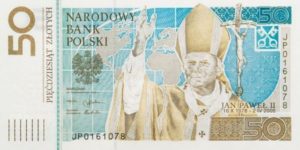
100th Anniversary of Poland’s Wedding to the Baltic Sea
www.nbp.pl
Issuing collector items is an occasion to commemorate important historic figures and anniversaries, as well as to develop the interest of the public in Polish culture, science, and tradition. Narodowy Bank Polski is the central bank of the State, responsible for its monetary policy and price stability. The Bank’s functions are described in the Constitution of the Republic of Poland and the Act on NBP. NBP holds the exclusive right to issue the currency of the Republic of Poland. As the central bank, it does not provide accounts for the general public, accept deposits from or extend loans to individuals. It acts as a banker to the State budget and public sector entities. NBP also holds and manages the foreign exchange reserves of the State. Finally, it functions as a banker to banks, creating conditions for the operation of the Polish banking system. Narodowy Bank Polski is one of the most important research and analytical centres in the fields of economics and financial markets. On 6 February 2020, the National Bank of Poland issued into circulation a silver coin “100th Anniversary of Poland’s Wedding to the Baltic Sea”, with a value of 50 złoty.


Face value 50 zł … Metal: Ag 999/1000; Finish: standard, oxidized, amber; Diameter: 45.00 mm; Weight: 62.20 g; Edge (side): smooth; Mintage: up to 5,000 pcs; Designer: Dominika Karpińska-Kopiec; Issuer: NBP; The coins, commissioned by NBP, were struck by Mennica Polska S.A. The image of a fisherman in the photo captioned “Generał Haller nad morzem polskim wraz z rybakiem kaszubskim” (General Haller by the Polish Sea with a Kashubian fisherman) by B. Gołogowski from the collection of the Marshal Józef Piłsudski Central Military Library. An image of General Józef Haller as depicted in Wojciech Kossak’s painting “Poland’s Wedding to the Sea” from the collection of the Polish Army Museum.
Republic of Poland by the Baltic Sea The collapse of the partitioning states after World War I, the actions of Poles in exile and the fights of Polish military units on all fronts were the basis of Polish independence. Its form was influenced by Western politicians. “A free and secure access to the sea”, as we can read in the 13th point of the speech by the President of the United States Thomas Woodrow Wilson of 8 January 1918, was sealed in the provisions of the Treaty of Versailles. When, after 11 November 1918, the fighting for the borders of the reborn state dragged on, in the former Royal Prussia and Gdańsk Pomerania the effort was focused on wrestling a corridor to the Baltic Sea from the German grip. Admiral Kazimierz Porębski, the initiator of the “maritime consciousness” awakening in the Polish society, won great merits in this respect, whereas General Józef Haller, commander of the Pomeranian Front, took over from Germans on behalf of the Republic of Poland the part of Pomerania conceded to Poland by the Allies.
Wedding to the Sea – opening to the world On Tuesday, 10 February 1920, at about 10.00 am, a special Polish train set off from Gdańsk to Puck. The journey took four and a half hours! A correspondent of “Gazeta Gdańska” newspaper reported that in front of their train moved a gorgeous locomotive that could not somehow reach Wrzeszcz (the part of Gdańsk). This German sabotage had no effect on the outcome of the undertaking. Delegations came to Puck from all over Poland. “Masses of people and army” in pouring rain, “amid the firing of cannons” reached the “airfield” where a chapel was improvised. The Polish flag was raised on the flagpole and a Holy Mass was celebrated. “We welcome you, our Polish sea, and we take you into our possession” – these were the final words of the sermon given by the reverend Józef Wrycza. A commemorative post with the Polish flag on it was placed on the seashore.
Józef Haller and the ring General Joseph Haller rode into the sea on horseback. On behalf of the Republic of Poland he threw into the water a platinum ring received from Polish Danzigers and concluded the ceremony with words: “Here is the day of reverence and glory. The White Eagle has spread its wings not only over the Polish lands but also over the Polish sea. The nation feels that it is no longer being strangled by the hydra, which has so far been wrapped around its neck and breasts. Now free worlds and free nations stand open before us. Now a Polish sailor will be able to reach everywhere under the banner of the White Eagle. The whole world is open to him”. Wedding to the sea – beginning of a success story On the initiative of Admiral Porębski, a nationwide “maritime movement” was organised. New organisations were formed: from the Stowarzyszenie Pracowników na Polu Rozwoju Żeglugi “Bandera Polska” (Association of Workers in the Field of Shipping Development) established in 1918 to the Maritime and Colonial League founded in 1930.
Polish Pomerania, only 140 km of coastline including the Hel Peninsula, became the area of a great civilizational experiment. In order to make Pomerania independent from the Free City of Gdańsk, which was hostile to Poland, almost everything was built from scratch. This experiment had as its flagship the city of Gdynia and it has contributed to the growth of the entire national economy, including the country’s defence and tourism industries. Nowadays, the shore of the Baltic Sea in Puck is decorated with a commemorative post with the Jagiellonian eagle and the inscription “Roku Pańskiego 1920, 10 lutego Wojsko Polskie z generałem Józefem Hallerem na czele objęło na wieczne posiadanie polskie morze” (In the year of our Lord 1920, on 10 February the Polish Army with General Józef Haller at the head of the troops took the Polish sea into eternal possession). Explore the coin The obverse shows the recovered part of Pomerania, delimited by the adjoining German territory, and a Kashubian fisherman with a long oar, characteristic for the region and historical period, and with a coil of nets. The reverse shows General Józef Haller entering the waters of the Puck Bay on horseback in the symbolic act of wedding to the sea. The background depicts a stylised patriotic manifestation on 10 February 1920, with a strong national accent – Polish state flags waving aloft. The amber insert emphasises the maritime character of the coin. Info: Jan Tarczyński, PhD.


Labrador
www.canadapost.ca https://postagestampguide.com
A beautiful day for Labrador … The country so wild and grand is of itself enough to interest anyone in its wonderful dreariness. Its mossy, gray-clothed rocks, heaped and thrown together as if by chance, in the most fantastical groups imaginable, huge masses hanging on minor ones as if about to roll themselves down from their doubtful-looking situations, into the depths of the sea beneath. By John James Audubon, The Labrador Journal.
In the 16th century, Jacques Cartier sighted the rugged coast of Labrador, and because of its bleak aspect he called his discovery “the land God gave to Cain”. French fishermen and Basque whalers visited the coast during this time, but only a few of the hardiest settled permanently. Like the island portion of Newfoundland, of which Labrador is a part, little of the land is arable, and through the 19th century, the major industries were fishing, sealing, and whaling. The technology of the 20th century, however, has broadened the economic base of life. Development of the pulp-wood and mineral resources which are extensive has brought Labrador record expansion and prosperity. (53-V-20)
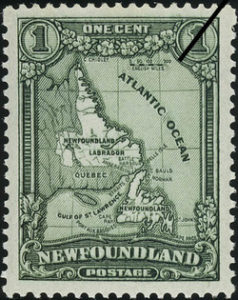
Map of Newfoundland Including Labrador … Date of Issue: January 3, 1928; Denomination: 1¢; Perforation or Dimension: 13.5 x 14, 14×13.5, 14; Printer: Thomas De La Rue & Company; Postal Administration: Newfoundland. Frame engraved by Leonard Vincent Phillips.
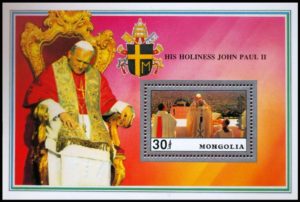
Black History Month: PermanentTM Domestic stamp
www.canadapost.ca
Celebrate Black History Month with this booklet of 10 PermanentTM domestic rate stamps recognizing an important time in Canadian ice hockey history. From 1895 until the early 1930s, All-Black hockey teams in the Maritimes challenged each other to exciting matches and – the ultimate prize – the Colored Hockey Championship. This stamp offers a glimpse into this historic hockey period with an illustration (based on an actual photo) of the Halifax Eurekas, the team that won the Championship in 1904. More than just incredible athletes, these players made important contributions to Canada’s national sport with their fast-paced, physical games and their down-to-the-ice style of goaltending. Today we celebrate their achievements.
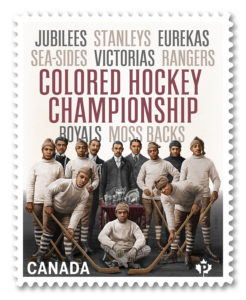
Stamp Value: PermanentTM (domestic rate) …
Dimensions: 32 mm x 40 mm; Quantity Produced: 140,000;
Stamp Designer: Lime Design; Issue Date: January 24, 2020.
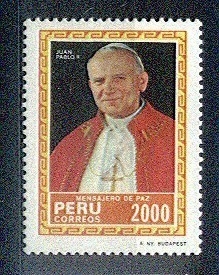
2020 … $20 Pure Silver Coin
– Black History Month: Willie O’Ree
www.canadapost.ca www.mint.ca
He is a hockey pioneer who overcame discrimination and a blinding injury to make his dreams come true. In honour of Black History Month, we’re proud to present this pure silver tribute to Willie O’Ree, the first Black player in National Hockey League history. His player portrait appears on the coin’s reverse, where the Boston Bruins® logo forms a pattern that’s easy to miss at first glance. It’s our special way of recognizing the Fredericton-born player who broke hockey’s colour barrier in 1958, and who continues to promote diversity and inclusion in today’s game. The coin’s design re-creates O’Ree’s photograph from his playing days with the Boston Bruins (1958, 1960-61).
The Boston Bruins team logo forms a repeating background pattern that is more prominent when viewed from a different angle or under certain lights. To give the coin a more personal touch, the design also reproduces O’Ree’s signature above his jersey number. Custom packaging complements the coin design and extends the celebration beyond the coin. Crafted from 99.99% pure silver, our tribute to the former NHL player-turned-ambassador for diversity is an officially licensed product of the NHL.

Face value: 20 dollars … Composition: 99.99% Pure Silver;
Mintage: 5,500; Finish: proof; Weight: 31.39 g;
Diameter: 38 mm; Artist: Susanna Blunt (obverse).
When Willie O’Ree stepped onto the ice on January 18, 1958, he wasn’t just making his National Hockey League® (NHL) debut—he was making history. Celebrate Black History Month with this pure silver tribute to Canadian-born hockey player Willie O’Ree, who became the first Black player to compete in the NHL. A story of courage and determination, O’Ree had to overcome discrimination and a competitive disadvantage to make his hockey dreams come true in the Original SixTM era. By breaking the league’s racial barrier, O’Ree’s legacy can’t be found in any scoring stats—it’s in the path he carved for future generations of Black players who left their own imprint on the game.
Design: The reverse design re-creates a photograph of Hockey Hall of Fame member Willie O’Ree from his playing days with the Boston Bruins (1958, 1960-61). O’Ree’s signature is reproduced above his jersey number (“22”), while in the background, the Boston Bruins logo forms a repeating field pattern. The obverse features the effigy of Her Majesty Queen Elizabeth II by Susanna Blunt.
Did you know… He kept his partial blindness a secret. It was during his time with the Kitchener Canucks, in the 1955-56 season, that a deflected puck struck O’Ree in the face. He lost 95% of his vision in his right eye and was told to stop playing, but 10 days later, O’Ree was back on the ice. He kept his partial blindness a secret since this would have made him ineligible to play in the NHL. O’Ree was also the first black player to score an NHL goal. It was a game-winner, too—it helped Boston beat the visiting Montreal Canadiens on New Year’s Day 1961 by a score of 3-2, and it earned O’Ree a standing ovation from the home crowd.
2020 Black History Month Profile: NHL Player Willie O’Ree … Born and raised in Fredericton, N.B., Willie O’Ree played his way up the ranks of junior hockey in Fredericton, Quebec City, and Kitchener-Waterloo, where the fast-skating left-winger proved to have an intuitive scoring touch. Signed by the Boston Bruins® in 1957, O’Ree’s big break came on January 18, 1958, when the three-time 20-goal scorer was called up as a replacement for a game against the Montreal Canadiens®. O’Ree played one more game for the Bruins before returning to Quebec, but his play earned him another call-up to the Bruins on November 18, 1960. O’Ree played 43 games in the NHL during the 1960-61 season, scoring four goals and 10 assists while enduring racist taunts by opposing players and fans. It proved to be his last season in the NHL; traded to the Montreal Canadiens, O’Ree played 14 seasons in the minors before hanging up his skates in 1979. A true trailblazer with an inspirational message for all, O’Ree returned to the NHL in 1998 as an ambassador for diversity and today, he continues to promote inclusiveness. He is a Lester Patrick Trophy winner, the inspiration for the Willie O’Ree Community Hero Award, and the recipient of both the Order of Canada and the Order of New Brunswick. O’Ree’s induction into the Hockey Hall of Fame in 2018 cemented his place in hockey history, by recognizing the far-reaching effects of his career.
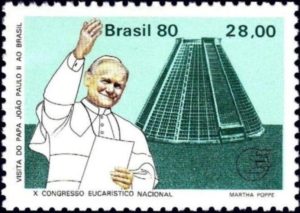
2020 … Proof Silver Dollar – 75th Anniversary of V-E Day
www.canadapost.ca www.mint.ca
May 8, 1945: After years of wartime sacrifices, the first opportunity to celebrate peace had finally come. News of the war’s end in Europe unleashed a wave of joy and relief that swept over both sides of the Atlantic, spilling into countries that Canada had helped liberate.
Our 2020 … 75th Anniversary of Victory in Europe (V-E) Day collection is the multi-part story of Canada in 1945—a story of wartime contributions and a peacetime legacy. It begins on the 2020 Proof Dollar, where the design strikes a balance between celebration and remembrance and sets the tone for coins to come. Our own past is present, with the 1945 Victory nickel serving as the inspiration for design elements that are the hallmarks of this collection—from the Victory privy mark to the holographic decal on each beauty box. This is our way of paying tribute to all who contributed to the fight for freedom, wherever Canada was needed.
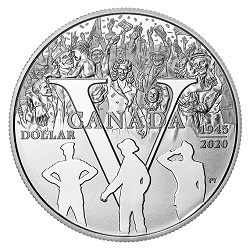
Face value: 1 dollar … Composition: 99.99% pure silver;
Mintage: 25,000; Finish: proof; Weight: 23.17 g;
Diameter: 36.07 mm; Edge: serrated; Certificate: serialized;
Artist: Pandora Young (reverse), T. H. Paget (obverse).
Design: Inspired by the 1945 Victory nickel, a large “V” for Victory dominates the reverse design by artist Pandora Young. The crowd represents jubilation on the home front on May 8, 1945, a day when Canadians poured into streets and public places to celebrate Victory in Europe (V-E) Day. The spontaneous celebration gradually fades behind the “V” to become a scene of remembrance, with three silhouettes representing the different branches (navy, army, and air force) of the Canadian and British Armed Forces in which Canadians and Newfoundlanders served. The obverse features the effigy of King George VI by T. H. Paget and a Victory privy mark.
“I was moved by the opportunity to commend all who supported, hoped, sacrificed and finally celebrated on the home front between 1939 and 1945—especially since there are fewer opportunities to commemorate the roles women and children played in Canada’s war effort. While designing this coin, I studied scenes of V-E Day celebrations in Canada and other Allied countries, and strove to recapture some of that exuberance and joy!” Pandora Young: Artist.
“There’s no real way to fade out a design so I had to create a raised surface or plateau that was about 50 microns higher than the field— any higher risked interfering with the strike. This is something we’ve never done before but it gave us the right volume of material to achieve a sharp impression on the bottom half of the coin.” Alex Tirabasso, Engraver.
Did you know… *Dressed in her Women’s Auxiliary Territorial Services uniform, Her Majesty Queen Elizabeth II (then Princess Elizabeth) was secretly among the crowd that celebrated V-E Day outside Buckingham Palace in London. *V-E Day marks the end of the war in Europe but not the end of the Second World War. War continued in the Pacific until Imperial Japan’s surrender on August 15, 1945, also known as Victory Over Japan (V-J) Day. Canada played a limited role in the Pacific but was preparing to transfer a large force from Europe when the war ended. *V-E Day celebrations had a false start on April 28 when rumours of Germany’s surrender proved to be premature. While May 8 was officially designated V-E Day (and a public holiday), some Canadians began celebrating on May 7, the day the surrender agreement was signed in Reims, France. *Between 1939 and 1945, more than a million Canadians and Newfoundlanders served in the Second World War. Over 45,000 lost their lives while 55,000 more were wounded. The war touched every aspect of life in Canada and shaped who we are today.
The 2020 75th Anniversary of Victory in Europe (V-E) Day collection is the multi-part story of Canada in 1945. It begins with the 2020 Proof Dollar, whose design strikes a balance between celebration and remembrance and sets the tone for chapters still to come. Our own past is present, with the 1945 Victory nickel serving as the inspiration for design elements that are the hallmarks of this collection — from the Victory privy mark to the holographic decal on the beauty box.
Your proof dollar is the starting point for a historical journey that spans several coins in 2020. It is the story of Canada leading up to V-E Day, of a nation’s contributions and its reaction to the end of the Second World War in Europe. Every branch of the Canadian Armed Forces is represented in the three silhouettes on this coin. Every coin in our 2020 V-E Day collection — including your Proof Dollar—features a special privy mark that was inspired by the 1945 Victory nickel. Canada’s Victory nickel also inspired the “V” seen on this coin’s reverse.
A holographic V-E Day decal extends the celebration beyond the coin and onto the beauty box. This logo is the hallmark of our 2020 V-E Day collection. Another collection-wide feature is the obverse design, which features the effigy of the reigning monarch in 1945.
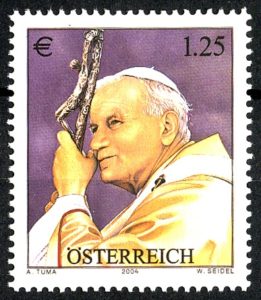
2020 … Pure Silver Proof Set – 75th Anniversary of VE Day
www.canadapost.ca www.mint.ca
Commemorate the 75th anniversary of V-E Day with the 2020 pure silver proof set. This seven-piece set is your only opportunity to own a selectively gold-plated version of the 2020 V-E Day Proof Dollar. From the big “V” for Victory on the reverse to the privy mark on the obverse, the enhanced proof dollar includes several features that were inspired by the 1945 Victory nickel. That same design also replaces the traditional beaver image on the 5-cent coin – another set exclusive that immerses you in a historic moment.
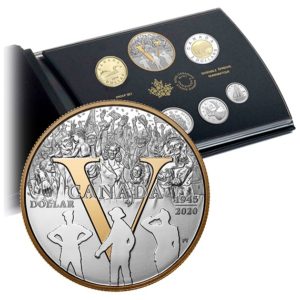
Face value: 1 dollar … Composition: 99.99% pure silver;
Mintage: 15,000; Finish: Proof; Weight: 23.17 g (Proof dollar);
Diameter: 36.07 mm (Proof dollar); Edge: serrated;
Certificate: serialized; Artist: Pandora Young (reverse) (Proof dollar).
A selectively gold-plated “V” for Victory dominates the proof dollar reverse design by artist Pandora Young. The crowd represents jubilation on the home front on May 8, 1945, a day when Canadians poured into streets and public places to celebrate Victory in Europe (V-E) Day. The spontaneous celebration gradually fades behind the “V” to become a scene of remembrance, with three silhouettes representing the different branches (navy, army, and air force) of the Canadian and British Armed Forces in which Canadians and Newfoundlanders served. The obverse features the effigy of King George VI by T. H. Paget and a Victory privy mark.
The 2020 Pure Silver 7-Coin Proof Set is part of a yearlong commemoration of the 75th anniversary of the end of the Second World War in Europe. A new gold plating technique was used that allows the gold to penetrate much smaller areas and reveal far more details than ever before. Every Canadian denomination is represented in this set, even the rare 50-cent coin. A holographic V-E Day decal extends the celebration beyond the coin and onto the beauty box. This logo is the hallmark of our 2020 V-E Day collection. Your book-style packaging is made of genuine leather and allows you to showcase this set with pride. Each coin has been hand-selected to provide you with the best samples of their kind.
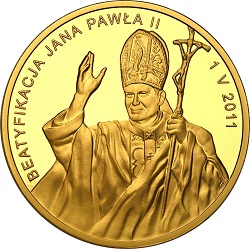
2020 … $100 14-Karat Gold Coin –
75th Anniversary of V-E Day: The Royal Canadian Air Force
www.canadapost.ca www.mint.ca
Per Ardua Ad Astra (Through adversity to the stars) (RCAF Motto 1945). Its squadrons defended the home front. Its personnel trained more than 131,000 aircrews from Canada and other Commonwealth air forces. And its members played key roles in operational missions that continued after V-E Day. This 14-karat gold coin salutes the Royal Canadian Air Force (RCAF) and its Women’s Division (WD) as we commemorate the 75th anniversary of V-E Day. The superbly detailed design features our saluting airman from the 2020 Proof Dollar. And while the news of the Allied victory (represented by a large “V”) is met with relief, the Spitfire reminds us that the end of the war in Europe marked the start of a new chapter: the gradual transition to peace.
This magnificent 14-karat gold tribute to the Royal Canadian Air Force is part of our 2020 V-E Day Collection – your definitive V-E Day collection. Collect them all to complete the story. The saluting airman on this coin was first introduced on the 2020 Proof Dollar (on the proof dollar, he is the silhouette on the right). While the Proof Dollar celebrates the wartime contributions of all Canadians, this piece focuses on an important part of Canada’s V-E Day story: the RCAF’s role in events that led to V-E Day and in the months that followed. Every coin in our 2020 V-E Day collection – including this 14-karat gold coin – is distinguished by a special privy mark, which was inspired by the 1945 Victory Nickel. Another collection-wide feature is the obverse design, which features the effigy of the reigning monarch in 1945. A holographic V-E Day decal extends the celebration beyond the coin and onto the beauty box. This logo is the hallmark of our 2020 V-E Day collection.
Its squadrons defended the home front. Its personnel trained more than 131,000 aircrews from Canada and other Commonwealth air forces. And its members played key roles in operational missions that continued after V-E Day. This 14-karat gold coin salutes the Royal Canadian Air Force (RCAF) and its Women’s Division (WD) as we commemorate the 75th anniversary of V-E Day. The superbly detailed design features our saluting airman from the 2020 Proof Dollar. And while the news of the Allied victory (represented by a large “V”) is met with relief, the Spitfire reminds us that the end of the war in Europe marked the start of a new chapter: the gradual transition to peace. This 75th Anniversary of V-E Day 14-karat gold coin is a must-have for your collection.
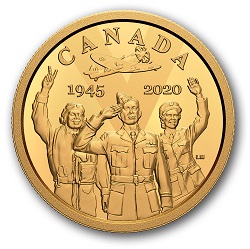
Face value: 100 dollars … Composition: 14-karat gold;
Mintage: 1,200; Finish: proof; Weight: 12 g; Diameter: 27 mm;
Edge: serrated; Certificate: serialized;
Artist: Laurie McGaw (reverse), Susanna Blunt (obverse).
Design: The reverse design by artist Laurie McGaw is a V-E Day salute to the Royal Canadian Air Force (RCAF). Against a “V” for Victory backdrop, a wing commander is flanked by a pilot on his right and a waving member of the RCAF Women’s Division on his left. The pilot flashes a Victory hand gesture and the commander raises his hand to salute as a Spitfire flies overhead. The obverse features the effigy of King George VI by T. H. Paget and a Victory privy mark.
Did you know … *In 1939, the RCAF was the smallest of the three branches of the Canadian Armed Forces—it had just 4,153 personnel and 270 aircraft (and almost 90% of these were considered obsolete). By 1945, the RCAF had become the fourth largest air force in the world. *About 249,600 men and women served in the Royal Canadian Air Force, including 17,000 members of the Women’s Division. *In 1941, the RCAF became the first Canadian service to create a separate women’s division, the Canadian Women’s Auxiliary Air Force, which was renamed the RCAF Women’s Division in 1942. Its members began in a few administrative trades. By the end of the war, their roles had greatly expanded, including in traditionally male domains such as repairing aircraft instruments and engines, and maintaining safety systems; others maintained parachutes or were radio operators, weather observers or service police. *An estimated 1,820 Canadians and Newfoundlanders also served in the Royal Air Force (RAF), including top ace George Beurling, aka “The Falcon of Malta.”

2020 … $10 Pure Silver Coin – Pulsating Maple Leaf
www.mint.ca www.canadapost.ca
World-leading technology in a pure silver coin! To create this unique take on the classic Silver Maple Leaf design, the Royal Canadian Mint Research and Development Team collaborated with the University of Ottawa’s Centre for Research in Photonics. Together, these innovators created a new technology that generates dynamic optical effects on coins. The technology works by creating sub-millimeter-scale mirrors on the coins. These mirrors are engineered to exact dimensions and orientations, then engraved on the coining dies used to strike the mirror array into the pure silver blanks. The result: the Silver Maple Leaf on the coin’s reverse appears to expand and contract when you tilt the coin, giving the impression that the maple leaf is pulsating.
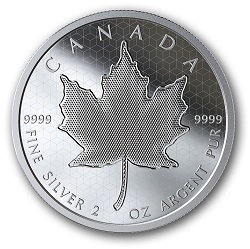
Face value: 10 dollars … Composition: 99.99% pure silver;
Mintage: 3,000; Finish: proof; Weight: 62.69 g; Diameter: 50 mm;
Edge: serrated; Certificate: serialized;
Artist: Susanna Blunt (obverse).
Design: The reverse image features the Silver Maple Leaf design from the Royal Canadian Mint’s bullion coinage, rendered using newly developed technology developed in collaboration with the Centre for Research in Photonics at the University of Ottawa. The reverse and obverse field pattern reproduces an expanded, non-pulsating version of the pulsating pattern on the maple leaf. The obverse features the effigy of Her Majesty Queen Elizabeth II by Susanna Blunt.
Did you know… The maple leaf design on this coin was first introduced on Royal Canadian Mint silver and platinum bullion coins in 1988. Although this is a collector (numismatic) coin and not a bullion coin, the bullion coins from which the design is taken represent some of the world’s most sought-after gold, silver, and platinum bullion. The Mint’s refinery is one of the most technically advanced for gold and silver in particular. This refinery has produced a number of world firsts, including being the first to introduce a 99.99% pure gold bullion coin (in 1982) and the first to unveil a 100-kilogram 99999 pure gold bullion coin with a $1 million face value (in 2007).
This coin design was created using a sub-millimeter-scale modified corner cube array. The shape, size, edge angles, and orientation of each individual mirror facet were carefully engineered to create the visual perception of a dramatically pulsating shape. This is an application of photonics, which is the science of generating, detecting, and manipulating photons (light particles). This far-ranging physical science has numerous impacts across fields ranging from a better understanding of the universe to improving our knowledge of diseases. It affects the daily life of people around the globe in the form of electronics, telecommunications, manufacturing, and more.
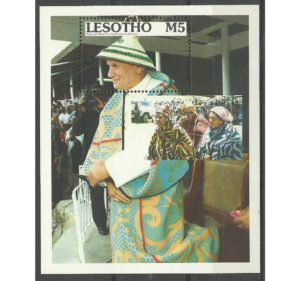


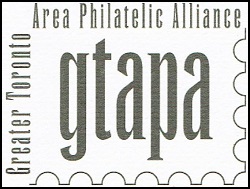
www.gtapa.org
The GTAPA is committed to promoting and
stimulate the art of philately to all ages for fun,
culture, education, and friendship.

